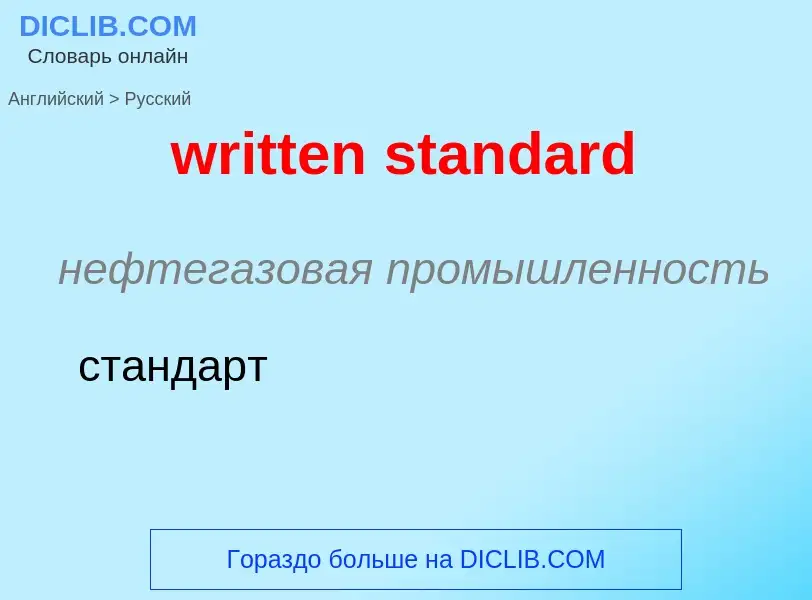Übersetzung und Analyse von Wörtern durch künstliche Intelligenz ChatGPT
Auf dieser Seite erhalten Sie eine detaillierte Analyse eines Wortes oder einer Phrase mithilfe der besten heute verfügbaren Technologie der künstlichen Intelligenz:
- wie das Wort verwendet wird
- Häufigkeit der Nutzung
- es wird häufiger in mündlicher oder schriftlicher Rede verwendet
- Wortübersetzungsoptionen
- Anwendungsbeispiele (mehrere Phrasen mit Übersetzung)
- Etymologie
written standard - Übersetzung nach russisch
нефтегазовая промышленность
стандарт
общая лексика
вторичный эталон
[,i:vnɪŋ'stændəd]
общая лексика
"Ивнинг стандард" (ежедневная лондонская вечерняя газета консервативного направления; тир. ок. 505 тыс. экз.; издаётся компанией "Ассошиэйтед ньюспейперз" [Associated Newspapers] Основана в 1827)
Wikipedia
Written vernacular Chinese, also known as Baihua (simplified Chinese: 白话文; traditional Chinese: 白話文; pinyin: báihuàwén) or Huawen (simplified Chinese: 华文; traditional Chinese: 華文; pinyin: huáwén), is the forms of written Chinese based on the varieties of Chinese spoken throughout China, in contrast to Classical Chinese, the written standard used during imperial China up to the early twentieth century. A written vernacular based on Mandarin Chinese was used in novels in the Ming and Qing dynasties (14th–20th centuries), and later refined by intellectuals associated with the May Fourth Movement. Since the early 1920s, this modern vernacular form has been the standard style of writing for speakers of all varieties of Chinese throughout mainland China, Taiwan, Malaysia, and Singapore as the written form of Modern Standard Chinese. This is commonly called Standard Written Chinese or Modern Written Chinese to avoid ambiguity with spoken vernaculars, with the written vernaculars of earlier eras, and with other written vernaculars such as written Cantonese or written Hokkien.

![The [[international prototype of the kilogram]] (IPK) is an artefact or prototype that was defined to have a mass of exactly one kilogram. The [[international prototype of the kilogram]] (IPK) is an artefact or prototype that was defined to have a mass of exactly one kilogram.](https://commons.wikimedia.org/wiki/Special:FilePath/CGKilogram.jpg?width=200)
![micrometer]]s. micrometer]]s.](https://commons.wikimedia.org/wiki/Special:FilePath/GaugeBlockMetricSet.jpg?width=200)





